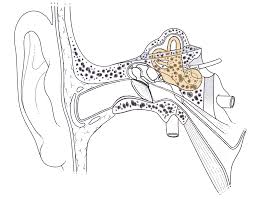Benign paroxysmal positional vertigo
Thu,Feb 18, 2016 at 02:00AM by Douglas Wilson
What is Benign Paroxysmal Positional Vertigo?
The sudden onset of severe dizziness due to no apparent cause is something that may affect many of us throughout our lifetime. Benign paroxysmal positional vertigo (BPPV) is a disorder of the inner ear and is the most common cause of vertigo symptoms.
Causes of benign paroxysmal positional vertigo
Calcium crystals detach in a certain area of your inner ear called the utricle, the area most responsible for detecting changes in horizontal movement. These crystals can then over time migrate into semicircular canals of the inner ear and then interfere with their ability to detect vertical and angular movements of the head causing dizziness. Symptoms such as vomiting, nystagmus (rapid side to side movement of the eyes) may occur in response to certain head movements. BPPV episodes should usually last a short period of time (approximately one minute). There are other possible medical causes of dizziness which can be far more serious however which is why differentiation of symptoms and their causes by a GP or physiotherapist is recommended.
What treatments are available for benign paroxysmal positional vertigo?
Benign paroxysmal positional vertigo is typically diagnosed by assessing the patient’s history and by performing the Dix-Hallpike manoeuvre or the roll test. Assessment and treatment of BPPV is non-invasive, doesn’t require the use of medication and can resolve in a small number of sessions. Treatment involves moving the head into different positions from sitting to lying down. This approach uses gravity to facilitate the movement of particles out of the semicircular canals into areas of the inner ear where their presence won’t cause dizziness.
Douglas Wilson is a senior physiotherapist with Body Organics in Brisbane. Douglas is a big believer in hands-on treatment with special interests in Active Release Techniques, Muscle Energy Techniques, acupuncture and pilates for injury rehabilitation. He especially enjoys treating lower limb conditions as well as spinal pain and upper limb conditions such as shoulder impingement, tennis elbow and carpal tunnel.
 0
0 
